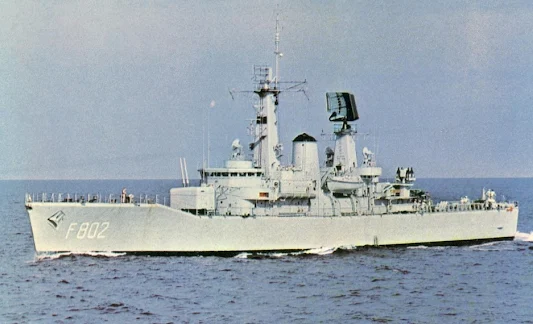After being hit by four successive anti-ship missiles on July 31, 2023, according to plan, the wreck of the former KRI Slamet Riyadi 352 is 'dwelling' in Situdodo Waters. Even though the debut of the Ahmad Yani class (aka Van Speijk class) frigates is now a distant memory, however, it is still interesting to examine the history of the frigates that once strengthened the NATO warship arsenal during the cold war era.
Especially when operated by the Dutch Navy, the frigate previously named HNLMS Van Speijk F802, has undergone a massive weapons system upgrade phase, which has turned Van Speijk into a modern frigate with drastically increased combat power.
When officially retired by the Dutch Navy on September 13, 1986, the composition of the HNLMS Van Speijk F802 weapon system, was the original attached to KRI Slamet Riyadi 352. Received by Indonesia in 1986, KRI Slamet Riiyadi 352 - even though it was purchased in used condition - was immediately named a the most advanced combatant ship of the Indonesian Navy at that time. Moreover, all (six units) of the Van Speijk class were bought up by Indonesia, which has de facto increased the combat power of the Indonesian Navy.
The composition of the Van Speijk class weapon is 1x OTO-Melara 76mm quick reaction cannon; 8x Harpoon anti-ship missiles (2 quad-launchers); 2x quad-launchers for Sea Cat missiles; Mk.32 torpedo tubes (2 triple-launchers) for six MK46 torpedoes.
For the Indonesian Navy, the presence of the OTO Melara cannon, the Harpoon anti-ship missile and the Sea Cat anti-ship missile, is a big step forward in the operation of modern weapons. Like the Harpoon, which at that time was considered modern as an anti-ship missile, even Indonesia's status as the operator of the Harpioon had irritated Australia. Meanwhile, the Sea Cat, although classified as an old missile, was lined up as the first Hanud missile to complement the Indonesian Navy's warships.
Quoted from seaforces.org, the Dutch Navy carried out a major weapons system upgrade on the six Van Speijk class frigates in the late 1970s, with the composition of the weapons as mentioned above. So, what is the composition of the Van Speijk class weapon before getting the upgrade?
Built from the Leander class platform which was once an icon of British frigates in the 60s and 70s, the Van Speijk class frigates were originally built with a typical British Leander composition.
When the HNLMS Van Speijk was launched from the Netherlands Dock & Shipbuilding, Amsterdam, on March 5, 1965, and then entered the Dutch Navy arsenal on February 14, 1967, the composition of the complementary weapons consisted of a double-barreled 114.5 mm cannon in the bow; 2x quad-launcher for Sea Cat missiles and 1x Limbo Mark 10 anti-submarine mortar.
For the record, Sea Cat missiles from the same era were also found on British frigates, veterans of the Falkland War, Tribal class (aka Martha Kristina Tiyahahu class). Including the Limbo Mark 10 mortar known to the Indonesian Navy through the Tribal class frigates.
For the Dutch Navy, the weapon system upgrade on the Van Speijk class frigates also brought a change, from previously using Westland Wasp helicopters, to using Westland Lynx helicopters. Unfortunately, the Wasp change package to Lynx does not participate in sales to Indonesia, because Lynx continues to operate after the Van Speijk class fleet retires.



